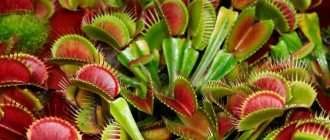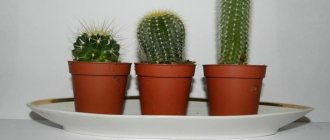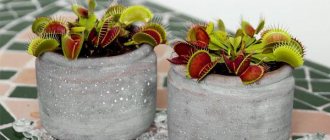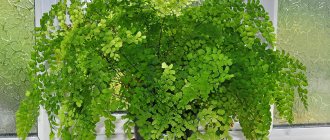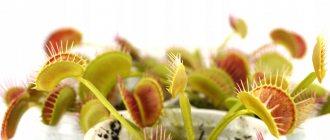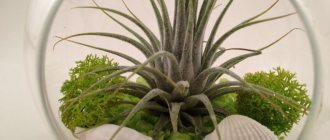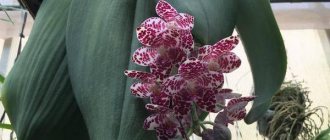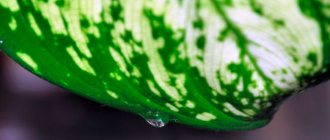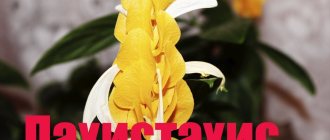Home page Wildlife World of plants
85 572 4.26 12
The Venus flytrap, or Dionaea muscipula, is a carnivorous plant that grows in the peat bogs of pine forests in the eastern United States, near the Atlantic Ocean, where the climate is humid and temperate. It became carnivorous in the process of evolution due to a lack in the soil of the main nutrients necessary for the growth and development of the plant.
How does a Venus flytrap hunt?
The soil on which the Venus flytrap grows is deficient in nitrogen, and its balance is shifted to the acidic side. Without a sufficient supply of nitrogen to the plant body, it is difficult for the plant to synthesize proteins and thereby continue to grow. Therefore, to replenish nitrogen reserves, the Venus flytrap hunts insects and digests them. This means that every fly or ant caught and digested by this plant acts as a nitrogen fertilizer, stimulating the growth and development of Dionaea muscipula.
The Venus flytrap hunts for insects with the help of leaves (the plant has 4 to 7 of them), which have a unique structure. A plant leaf has two main areas:
- The wide part is called the base of the leaf. All conditions for photosynthesis and nutrition through the root system are present here.
- The part that acts as a trap is called the leaf blade.
The blade is located along the edge of the leaf, which consists of two halves connected by a longitudinal vein. Each flycatcher trap has two to five "trigger hairs" on each lobe (there are usually three). Along the edge of the blade there are teeth shaped like fingers. In Latin they are called cilia. When the trap slams, these fingers intertwine. The base of the leaf and the blade (trap) are connected by a part called the petiole (a botanical term for the stem part of a leaf).
How to grow bonsai at home?154053.567
Popular types of flycatchers with photos and names
Breeders develop different varieties of Dionaea, usually trying to make them look even more creepy and predatory. Below you will see some examples.
Akai Ryu
A bright flower, distinguished by a rich crimson, even purple, uniform color both inside and outside.
Bohemian Garnet
Translated into Russian, the name sounds like “Czech pomegranate”. Very similar to the previous variety, as if it came out of the screen of some Tim Burton film: the outer side of the trap is black, and the inner side is purple, the teeth are thick and frequent.
Dentate traps
It looks more friendly: the inside is red, the outside is yellow-green, the trap takes the shape of a tangerine slice and seems to glow from within.
Giant
Yellow-green outer part and deep red, like expensive lipstick, inner part. The traps are large and form quickly.
Dracula
In fact, any Venus flytrap can be called a Dracula, but this one is distinguished not only by the red inside, but also by the red tips of the teeth.
Crocodile
It really looks like a crocodile: the elongated, oval-shaped traps resemble its jaws due to the pink inside and light green outer part.
Triton
Round, soft green traps. They are interesting because they are not cut completely, which is why they often stick together.
Funnel trap
The variety is interesting because one plant can have traps of different shapes. In a young plant they are green, but with age they turn red.
Bristletooth
A distinctive feature is very short, sparse teeth, more reminiscent of a soft green sharp fringe.
Fondue
This variety is interesting because its traps are always different, often distorted in shape. It is often purchased because of its frightening exotic appearance.
Fused tooth
This variety is distinguished by sparse, thick teeth, reminiscent of the jaw of a large predatory animal.
Long red fingers
The peculiarity of this variety is reflected in its name: red, elongated cloves are often curved, intertwined, fused, like ugly fingers from a horror movie.
Low giant
The largest variety of Venus flytraps with the largest traps.
Red Dragon
An unusual variety, distinguished by long stems, small traps of red-pink uniform color, with long thin cloves.
Red piranha
An eerie variety of purplish-brown color with frequent, short teeth, oval-shaped traps.
Regula
A rare feature of this variety is multi-colored traps: inside they can be either a lighter scarlet shade or a rich crimson one, on the same plant.
Joyce
This variety is interesting because it resembles a small round bush of many small trap leaves, warm green on the outside and bright purple on the inside.
The following plants are also similar to the Venus flytrap: butterwort (looks like a soft green rose with sticky leaves in which insects get stuck), nepenthes (a large plant with traps that look like bags or vessels), similar sarracenia and sundew.
Closing mechanism
The top of each side of the Venus flytrap trap is colored with anthocyanins, pigments that give the surface of the trap a red color. This coloring is the main bait for insects in this plant. The trap cells also secrete a sticky substance, which is a type of protein. After the insect crawls into the trap, it begins to flounder on the slippery and sticky surface, greedily licking off the substance, touching the trigger hairs that signal the trap to slam shut.
The trap closing mechanism of the Venus flytrap can be divided into four main phases:
- Initial slamming.
- Compression phase.
- Sealing phase.
- Re-opening phase.
The "descent hairs" are indicators for the plant, which by their vibrations determines that potential prey is trapped. If two hairs are touched at once or one hair twice in a row within 30 seconds, the trap slams shut in a tenth of a second.
The slamming motion of a Venus flytrap is one of the fastest movements that plants are capable of. The amount of time it takes for Dionaea muscipula to slam shut varies greatly depending on ambient temperature, light, plant health, and other factors. However, the trap of a healthy plant in warm conditions slams shut very quickly.
The details of the slamming process are actually quite complex. Scientists are currently researching this process and have put forward various hypotheses, which include an instantaneous increase in cell size and an "unstable latch state" that are under the control of this plant.
Recent research conducted in 2005 by Harvard scientists shows that the Venus flytrap's trap slamming mechanism is based on biochemical and elastic processes. They cause the leaf tissue to stretch to the point of instability, and after touching the hairs, the plant instantly pumps water into the leaf, causing slamming.
Reproduction methods
Here are four methods for propagating Dionaea:
- cuttings;
- bulb division;
- seminal;
- use of peduncle.
Cuttings
Dionaea cuttings must be taken without a trap. Sections need to be treated with Kornevin. The cutting should be planted with the lower white part at an angle. The container must contain wet peat or, alternatively, a mixture of sand and peat. Next, the lid must be tightly closed and then placed in light and heat. At the same time, until the plant takes root, it is necessary to maintain warmth, bright lighting and high humidity.
Dionaea can be propagated by cuttings without traps
Baby bulbs
An adult Dionaea becomes “equipped” with many daughter bulbs throughout its life. This plant feels great around children, and their separation is very stressful for it. And therefore, at least three years must pass between two neat branches of the bulbs. When separating the bulbs, you need to be careful and separate them along with the roots. Then the bulbs need to be planted in separate pots.
Next, these seedlings must first be kept under a film to create a greenhouse effect, and before they take root, kept in partial shade.
Dionea produces many bulbs, but their separation is stressful for the plant
Dionaea is the most difficult to propagate by seed. What’s worse is that it’s still unknown what will happen. Genetically, the daughter plants are not complete “clones” of the mother plants, and the characteristic features inherent in the mother Dionaea disappear. Only an adult plant produces seeds, and Dionaea becomes like this after reaching a couple of years.
The gardener will have to pollinate Dionaea with his own hands. You need to use a cotton swab or a small brush to take pollen from each flower, which you want to transfer to another flower. And do this for several days and several times. If pollination is successful, a capsule fruit is formed on the plant. By autumn it will already contain seeds suitable for sowing. They need to be planted immediately, since germination is then lost.
You will have to pollinate Dionaea to obtain seeds yourself.
First of all, you need to prepare a container and soil for planting, and also a greenhouse for further maintenance of the plants. It is recommended to plant seeds in a container with a lid. Line the bottom with a mixture of one part sand and two parts sphagnum moss. Before planting, you must also treat the seed with Topaz solution, strictly following the attached instructions.
Next, the seeds must be spread over the soil mixture. Now cover the container with a lid and place it in the sun. If it is not available, you can use it under a fluorescent lamp or a phytolamp. The light should shine on the container for about 13 hours a day, give or take one hour. In this case, it is necessary to maintain maximum air humidity.
It will take about a month for the seeds to sprout the first shoots. When the soil begins to dry out, it needs to be moistened with a spray bottle of warm distilled water. With the appearance of the first foliage, it is time to start ventilating the greenhouse. At first, you need to open it for a short time, allowing the seedlings to harden and get used to the fresh air.
It takes a long time for a Venus flytrap to grow from seeds, but it requires careful care: you need to organize a “greenhouse” for plant germination, control lighting and watering
In spring, a long peduncle grows on Dionea. Its length reaches 50 centimeters, while the plant itself can be 10-15 centimeters tall. If Dionaea is still young, it may not have enough strength for such flowering, which will lead to illness. So a gardener who is not confident in the strength of the plant should immediately cut off the peduncle.
However, it is better to preserve this part of the dionaea in order to propagate the plant. To do this, the peduncle needs to be cut until it reaches only five centimeters. It needs to be stuck into moistened peat to a depth of five centimeters. Next, cover with film or a light-transmitting cap, thereby creating greenhouse conditions.
The peduncle takes root in one and a half to two months. Throughout this period, it is necessary to ventilate the greenhouse and carefully ensure that the peat maintains proper moisture. Even if the peduncle dries out, this is normal; it will not affect the timing of the appearance of shoots, so there is no need to despair.
You can propagate the plant using a growing peduncle, which is cut and rooted in peat
Compression phase
If the initial slam of the trap is successful, the compression phase begins, which lasts about half an hour. The process looks like this. During the struggle, the insect inside the trap continues to touch the “trigger hairs.” This signals the flycatcher that it needs to further clamp the flaps to keep the victim inside. If the insect is small enough, it can slip through the teeth of the trap and escape.
The compression phase does not occur if the slamming is unsuccessful in finding prey. This happens if, when the flaps collapse, the insect manages to get out of the trap or vibrations of the hairs occur, caused by other leaves, raindrops, or a person who stuck his finger there. Then the trap begins to slowly open and opens completely in a day or two. But if such touching of the hairs occurs several times, it can lead to blackening and death of the trap. In subsequent times, the rate of collapse of the same trap drops significantly.
Watering
The indoor flower Venus flytrap is very sensitive to the composition of water. Even settled tap water is not suitable for watering it. Do not water with rainwater; due to unfavorable environmental conditions, it may contain various impurities. It is best to use cold boiled or filtered water. The soil in the pot is kept constantly moist. Lack of water kills the traps. It is best to place the pot on a tray of water so that the plant itself regulates its need for moisture.
Sealing and opening phases
If the trap successfully captures the prey and the insect does not escape before the compression phase begins, the sealing phase begins. During this phase, the teeth of the trap move forward and outward so that they no longer intertwine. As a result, the edges of the flytrap lobules (blades) on both sides are tightly pressed against each other. When the seal becomes dense and impenetrable, digestive enzymes begin to be released. The insect drowns in them and is gradually digested.
Over the next 5-12 days, the trap remains closed during digestion. At this time, digestive enzymes continue to be released, dissolving the soft tissues of the insect. The nutrients contained in the tissues of the insect are released in a form in which the flycatcher leaf can absorb them.
The amount of time required to completely digest the prey depends on the age of the insect, the trap, and the ambient temperature. The larger the insect, the longer digestion takes. The older the trap, the slower the digestive enzymes are released; the warmer the weather, the faster digestion occurs.
For an ideal “lunch,” the insect should be one-third the size of the trap. If the insect is too large or any part of it is hanging out of the trap, the seal may not be tight. Because of this, the trap may die. It turns black, dies and falls off the plant. The base portion of the leaf will continue to supply energy to the plant through photosynthesis, but it will no longer grow new serrated blades capable of hunting.
After finishing lunch, the leaf absorbs substances along with the digestive fluid that the plant received as a result of digesting the prey. This signals the plant to open the trap again. All that remains by this time after lunch is the exoskeleton of the insect. It can be washed away by rain, blown away by the wind, but it can also serve as bait for the next victim. Very often, spiders or ants are lured by the corpse, which ends up being the next meal for the Venus flytrap.
After several successful hunts in a row, the trap stops functioning. The plant itself lives much longer: under favorable conditions, it can function for twenty years.
Wintering the plant
By the onset of October, it is necessary to stop feeding Dionaea. She is already tired and begins her part of the preparations for winter. Visually, this can be seen by the fact that new leaves stop appearing, and old ones turn black and fall off, in the process the rosette becomes smaller. Then the plant should not be fed until the end of winter.
With the onset of December, the plant should be moved to a cooler place, while some lighting is allowed. The temperature should be between 2-10 degrees. Sometimes the pot needs to be taken out to the basement. It would be a good idea to put it in a plastic bag and then store it at the bottom of the refrigerator. A glass loggia is also suitable for preserving dionaea in a bag.
In such a cool place, a flower pot placed in a bag will be stored for three or four months. This is how long the hibernation of Dionaea lasts. In February it’s time to return it back to the warmth and light. Then you need to immediately cut off last year's traps. It is also important to continue caring for the plant. It is necessary to carefully maintain the humidity and temperature suitable for Dionaea, water it, and spray it. And only by the beginning of June can we expect that Dionaea will begin to grow rapidly again.
In winter, the plant should be kept indoors, where the temperature is 2-10 degrees
A full winter will ensure the plant a long life.
